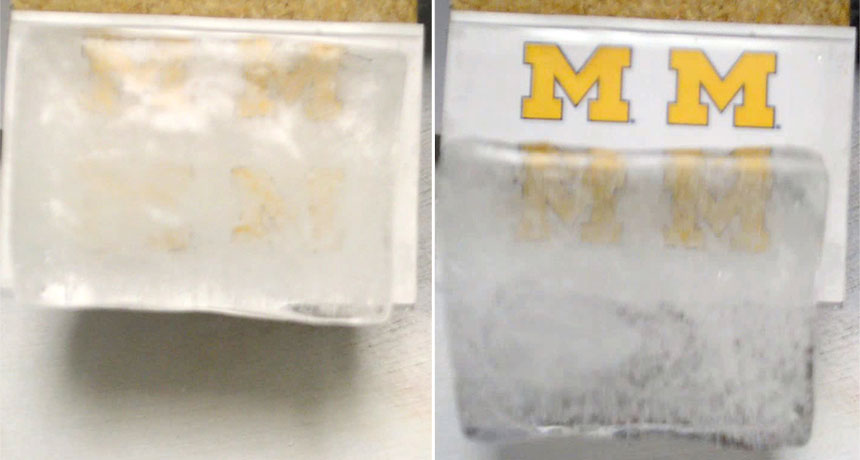New process encourages ice to slip, slide away

Ice removal may soon become a lot easier. Researchers have developed a new method for making ice-phobic surfaces by altering the density and slipperiness of spray-on polymer coatings.
The process, reported online March 11 in Science Advances, could lead to a wide range of long-lasting ice-repellent products including windshields, airplane wings, power cables and frozen food packaging, researchers say.
Scientists know that ice easily detaches from softer, less dense materials. Further adjusting the density of rubber polymers used to make the coatings and adding silicone or other lubricants such as vegetable oil, cod-liver oil and safflower oil amplifies the effect, Anish Tuteja, a materials science engineer at the University of Michigan in Ann Arbor, and colleagues found.
In multiple laboratory and field tests, ice slid off treated surfaces under its own weight or when it was pushed by mild wind. The researchers further tested the coatings’ durability on various surfaces such as metal license plates and glass panes. The coatings performed well through two Michigan winters and retained their ice-repelling properties after controlled exposure to icing and heat cycles, corrosive substances such as hydrochloric acid, and wear and tear.
The process has already yielded more than 100 different coatings tailored for specific surfaces, including metal, glass, wood, plastic and cardboard. Tuteja says his team is working on licensing the materials for commercial use.